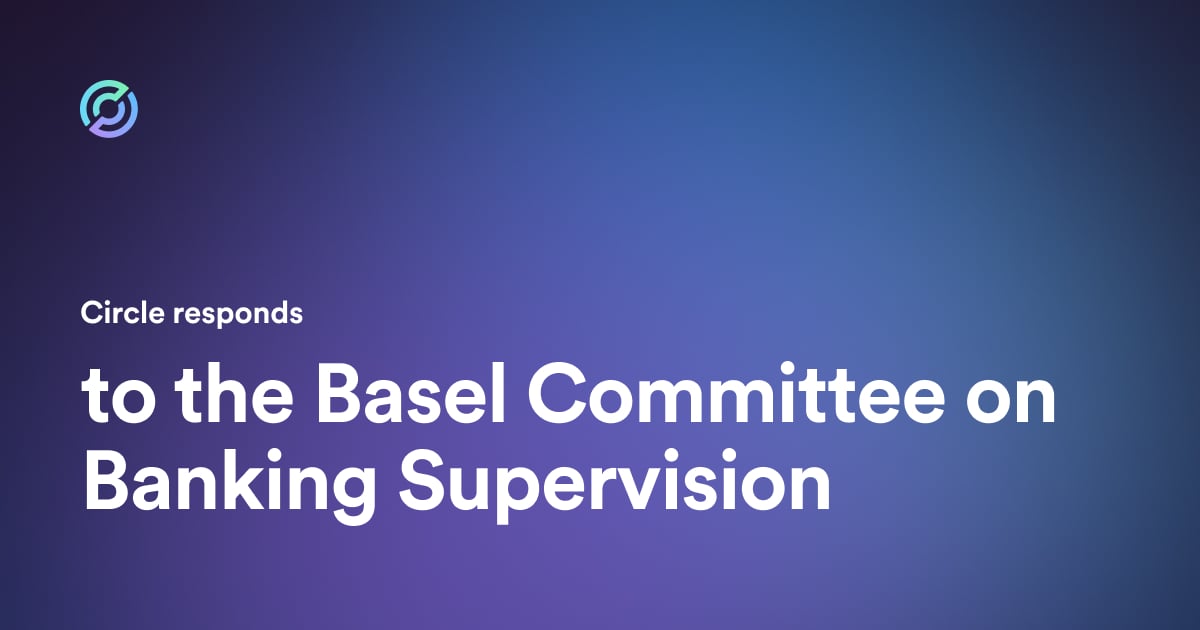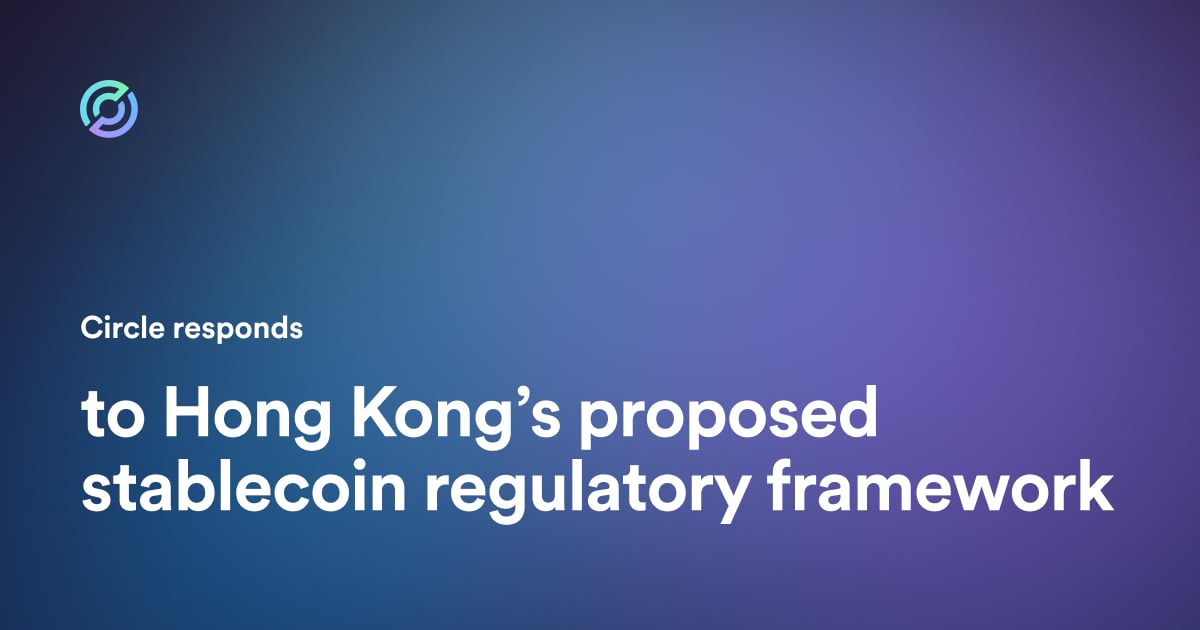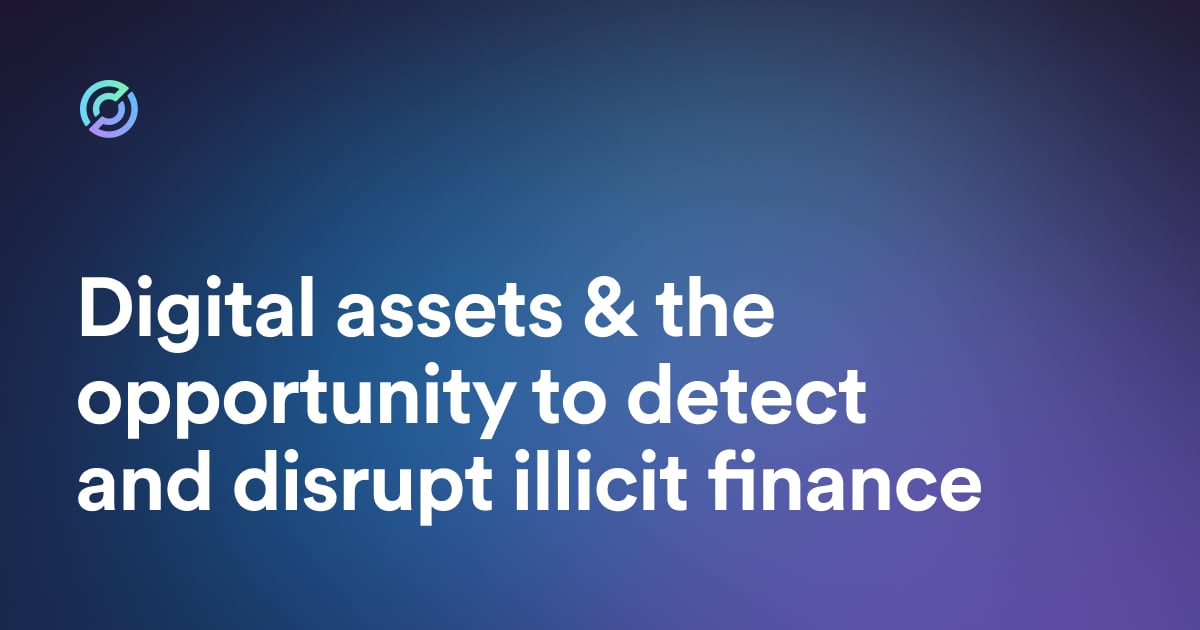Circle recently submitted public comments in response to the Federal Reserve’s discussion paper on the potential impact of a U.S. central bank digital currency (CBDC). The Fed’s paper and the responses from a wide range of stakeholders mark a milestone in this important policy debate.
Circle has, for years, advocated for a national framework for how to issue, manage, and operate dollar digital currencies. Rigorous public-sector oversight is needed now and we will continue to work with Congress and key regulators to advocate for clear rules that support responsible innovation.
Circle’s comments address:
- Why the risks of a U.S. CBDC outweigh the potential benefits, which are already being met by existing private-sector, open blockchain-based payment innovations like USDC.
- Why a U.S. CBDC, which would take years to create, would not be superior to USDC, a regulated, fully-reserved stablecoin that’s backed by cash and short-duration U.S. government obligations.
- Why a CBDC would stifle innovation, exacerbate financial inclusion and access, and threaten the existing banking system and broader economy.
- Why USDC supports U.S. economic competitiveness, financial inclusion, and the U.S. dollar’s role as the world’s reserve currency.
Circle’s full responses are available Here.
KEY POINTS AND EXCERPTS
- USDC and other private-sector innovations are already achieving what a CBDC would hope to offer.
- “Many of the benefits of a CBDC are already being met by private-sector innovations, like USDC, through blockchain-based payment systems. USDC is a regulated, fully-reserved U.S. dollar digital currency that is backed by cash and short-duration U.S. government obligations so that it enjoys price parity with the U.S. dollar. The reserves are held in the care, custody and control of the U.S.-regulated banking system and issued in compliance with money transmitter requirements. Each month, Circle publishes attestation reports by a global accounting firm regarding the reserve balances backing USDC in circulation. USDC does not detract from, but in fact supports, the dollar’s role as the world’s reserve currency.”
- CBDCs may exacerbate existing problems with financial inclusion.
- “[O]ne-third of unbanked Americans noted a lack of trust in financial institutions, which may not be allayed in an intermediated CBDC system. It is possible that because the public’s confidence in government institutions and banks has been declining, a CBDC could make the unbanked or underbanked even less likely to engage with financial institutions.”
- “[O]ne-third of unbanked Americans noted a lack of trust in financial institutions, which may not be allayed in an intermediated CBDC system. It is possible that because the public’s confidence in government institutions and banks has been declining, a CBDC could make the unbanked or underbanked even less likely to engage with financial institutions.”
- A CBDC may destabilize the banking system.
- “A CBDC, both in interest bearing and non-interest bearing forms, creates potential domestic flight-to-quality or flight-to-safety problems which could destabilize the two-tiered banking system. . . . It is not clear from the Federal Reserve’s discussion paper that a CBDC would avert run risk or other financial stability concerns”.
- A CBDC could add a layer of costs to the private sector.
- “The Federal Reserve’s discussion paper does not expand on the potential adaptation costs associated with the implementation of a CBDC, including for businesses and individuals that would need to accommodate transactions involving a CBDC. These costs could range from new back-end settlement processes to customer-facing point-of-sale (POS) systems, and they could affect millions of businesses and individuals transacting with a potential CBDC.”
- The U.S. government is not well-situated to develop and maintain the technology required to successfully administer a CBDC.
- “The timing of the deployment and implementation of a CBDC is also an important factor. As U.S Treasury Secretary Janet Yellen said in an April 2022 speech, ‘[W]e must be clear that issuing a CBDC would likely present a major design and engineering challenge that would require years of development, not months.’”
- “It could be challenging for the Federal Reserve to issue a CBDC on a technology standard that does not quickly become obsolete, given the pace of technological advancements.”
- The Fed should consider whether adopting a CBDC would give license to autocratic regimes to erode privacy and other important consumer protections by deploying their own CBDCs.
- “The presumption of privacy and the universally free and lawful use of money is an important principle and human right. CBDCs and centralized payment system innovations, particularly those that are government-led or developed by potentially repressive countries, pose serious potential breaches of this public trust.”
- “The prospect of social credit scoring, deplatforming individuals from public money or creating financial redlines, among other risks, are real public policy challenges that should be considered when contemplating a CBDC.”
Back to top


